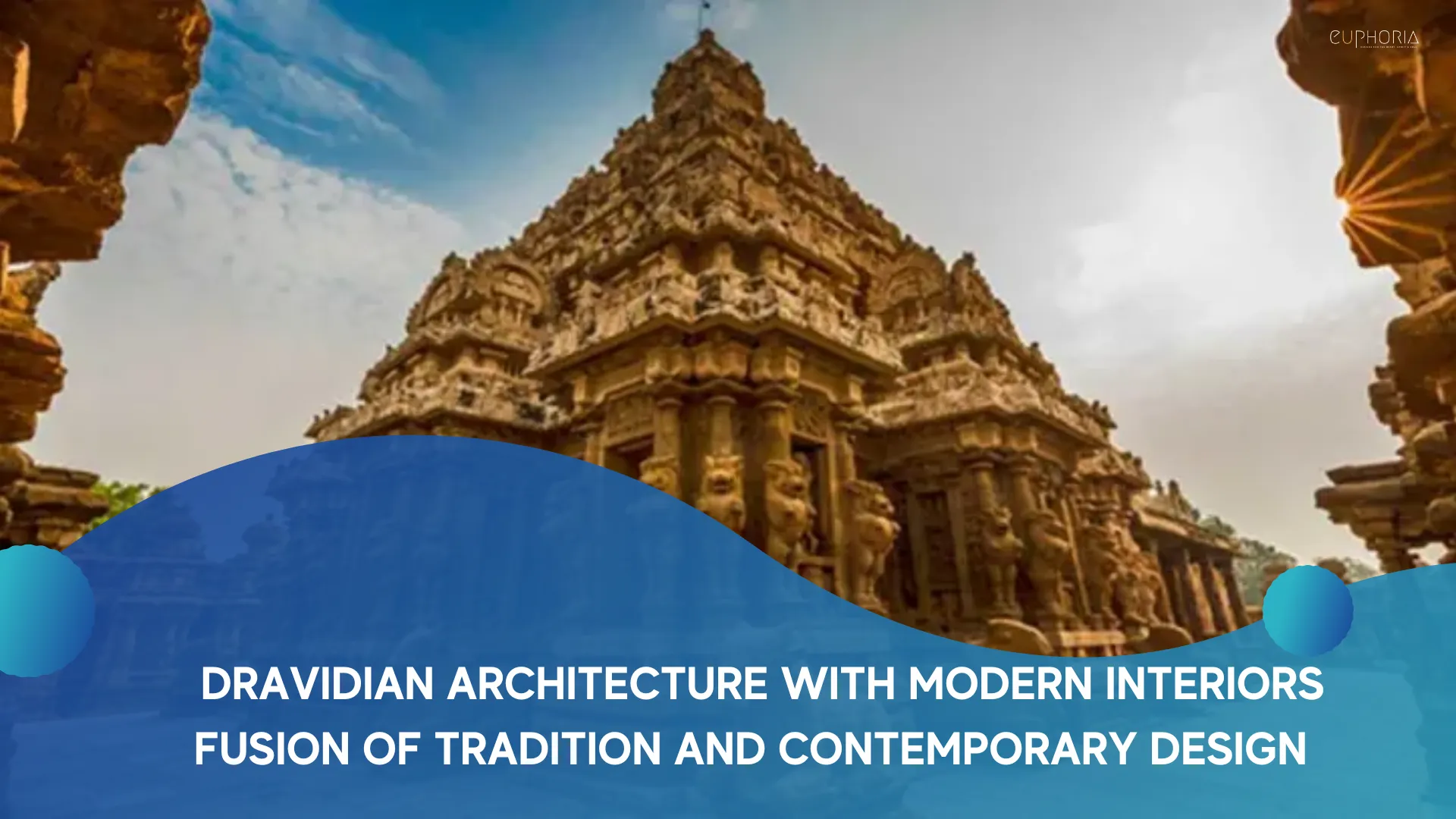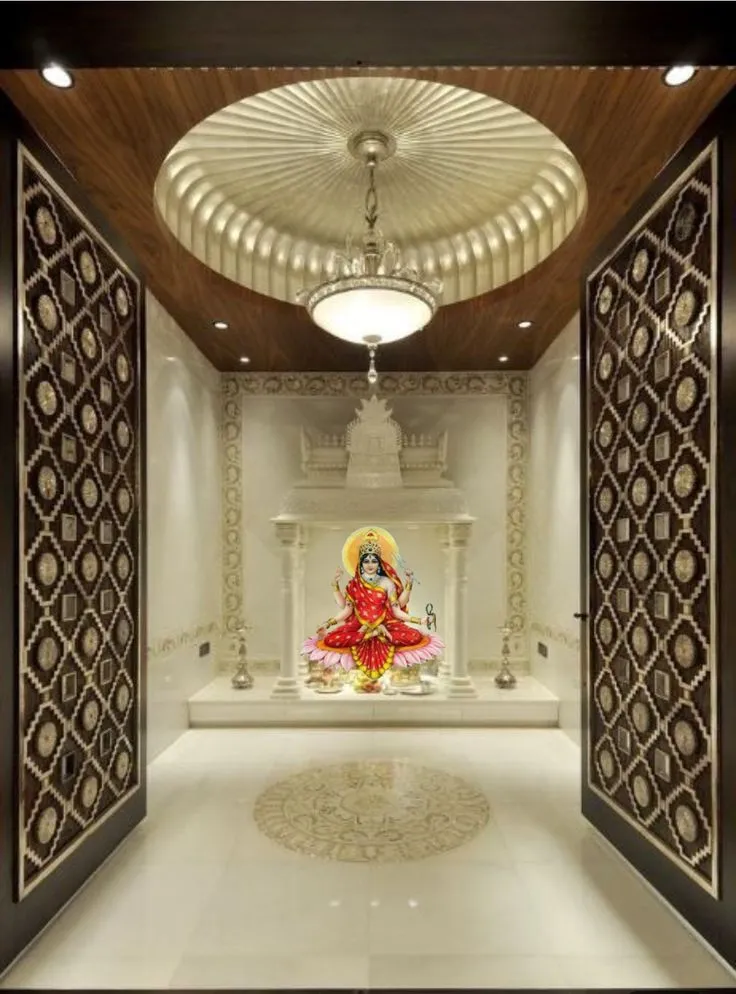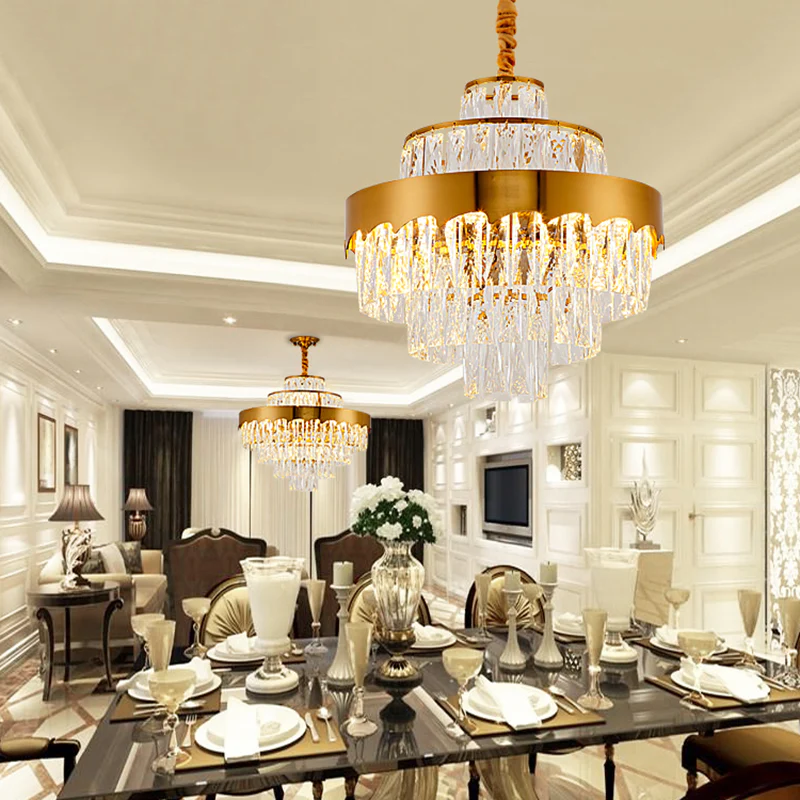Let’s talk about Dravidian architecture with Modern Interiors confused? Dravidian architecture, also known as Dravidian Shaili, is a fascinating and rich part of South Indian culture, filled with stunning details like towering vimanas, carved pillars, and grand gopurams. Traditionally seen in temples, these elements are now finding a place in modern interior design. More and more people are looking to bring the beauty and depth of this ancient style into their homes, creating spaces that are both culturally meaningful and stylish. In this blog, we’ll explore how you can blend the timeless elegance of Dravidian architecture with contemporary design to craft interiors that are not only beautiful but also practical for modern living.
Understanding Dravidian Architecture
To truly appreciate how Dravidian Shaili can be blended with modern interiors, it’s essential to understand the key elements that define this architectural style.
Vimana and Gopuram are among the most recognizable features of Dravidian architecture. These towering, geometric structures not only create a striking visual impact but can also inspire modern design by adding a sense of height and grandeur to spaces like entryways or living rooms.
Intricate Carvings and Sculptures are another hallmark of this style, often depicting deities, mythical creatures, and floral motifs in stunning detail. In modern interiors, these carvings can be translated into wall art, decorative panels, or even custom furniture pieces, bringing a touch of history and craftsmanship into the home.
Mandapas (Pillared Halls) traditionally serve as open, airy spaces in temples, fostering a sense of community and connection. In contemporary design, this concept can be adapted to create spacious, light-filled living areas that promote a free flow of movement and a feeling of openness.
Material Palette of Dravidian architecture typically includes natural stones like granite and sandstone, as well as rich woods. These materials can be seamlessly integrated into modern interiors, whether through flooring, countertops, or accent pieces, to add texture, warmth, and a timeless quality to the space.
Blending Dravidian Architecture with Modern Interiors
-
Vimana-Inspired Ceilings:
Drawing inspiration from the tiered vimanas that crown Dravidian temples, you can introduce similar pyramid-shaped structures in the ceilings of your living rooms or foyers. These designs not only add visual interest and height to a room but also create a sense of grandeur reminiscent of temple architecture. The layered or stepped approach can be subtle, using modern materials like wood or gypsum, or more elaborate with ornate details, depending on the desired impact.
-
Gopuram-Inspired Doorways:
The gopuram, a towering gateway often adorned with intricate carvings, is a signature element of Dravidian temples. In a modern home, this can be translated into gopuram-inspired doorways that make a bold statement. By incorporating arches or elaborate door frames that echo these temple gateways, you create a dramatic and welcoming entrance. These doorways can be scaled to suit the proportions of your home, blending traditional grandeur with contemporary aesthetics.
-
Carved Panels and Murals:
Dravidian temples showcase stunning carvings and sculptures that depict deities, mythological scenes, and intricate patterns. You can bring these elements into your home by incorporating carved wooden panels, stone reliefs, or murals as focal points. Place these features on walls in living areas, dining rooms, or even as headboards in bedrooms to infuse your modern interior with cultural richness and exquisite craftsmanship.
-
Mandapa-Inspired Open Spaces:
Mandapas, the pillared halls of temples, are known for their open, airy design, facilitating both function and spiritual gatherings. In a modern context, this concept can inspire open-plan living spaces or courtyards that encourage a sense of flow and connection throughout the home. By using pillars, open layouts, and natural materials, you can recreate the serene, expansive feel of a mandapa, providing a perfect balance between communal areas and personal retreats. This design approach not only enhances the spatial experience but also imbues the home with a tranquil, sacred atmosphere.
Enhancing Aesthetics and Functionality for Dravidian Architecture with Modern Interiors
To bring Dravidian architecture into your modern home, it’s important to focus on both aesthetics and functionality.
Lighting Design: Combine the warm glow of traditional oil lamps with modern lighting to highlight intricate architectural details, creating a space that feels both inviting and rich in history.
Furniture and Decor: Choose furniture that echoes the Dravidian aesthetic—think beautifully carved wooden pieces that add character and depth to your rooms.
Color Schemes: Embrace earthy tones, deep reds, and golds to capture the grandeur of Dravidian temples. Balance these rich colors with neutral shades to keep the space feeling fresh and contemporary.
Smart Storage Solutions: Blend traditional elements like wooden chests or decorative niches with modern storage options to create a space that’s not only beautiful but also highly functional.
Successful Blends of Dravidian Architecture with Modern Interiors
A standout example of blending Dravidian Shaili with modern design is the ITC Grand Chola in Chennai, India. This 5-star luxury hotel is a stunning showcase of how traditional South Indian architectural elements can harmonize with contemporary luxury. Designed by Singapore-based SRSS Architects, the hotel pays homage to the grandeur of the Chola dynasty, incorporating elements like tall pillars, grand columns, and sweeping staircases that are reminiscent of ancient temples.
Key Design Choices
-
Architectural Elements: The hotel integrates tall, hand-carved pillars and sweeping staircases, echoing the majestic design of the Brihadeeshwara temple. The use of marble and intricate carvings on walls, ceilings, and pillars reinforces the theme of Chola architecture.
-
Decor and Motifs: The interiors feature white and soft-cream floral motifs, including kolam-inspired patterns in the food and beverage areas. A bronze horse sculpture at the entrance mirrors the chariots of Chola kings, while the intricate stonework, created by artisans from Mamallapuram, adds a touch of historical authenticity.
-
Functionality and Modern Touches: Despite its traditional design, the ITC Grand Chola includes modern amenities like a massive convention center and luxurious rooms, ensuring that the space is both historically rich and functionally up-to-date.
DIY Tips: How to Start Blending Dravidian Elements in Your Home
-
Incorporate Small Decor Items: Begin by adding Dravidian-inspired decor items such as carved wooden panels, intricate lamp stands, or traditional oil lamps. These smaller elements can subtly introduce the Dravidian aesthetic into your space without overwhelming it.
-
Feature Larger Structural Changes: For a more dramatic impact, consider incorporating larger structural elements like archways or columns that mimic the grandeur of Dravidian temples. You could also explore options like creating a feature wall with traditional carvings or using stepped ceiling designs reminiscent of a vimana.
-
Source Authentic Materials: Look for materials that reflect Dravidian style, such as hand-carved wooden furniture, stone sculptures, or traditional textiles. Specialty stores or artisans who focus on South Indian craftsmanship can provide authentic pieces that align with the Dravidian aesthetic.
-
Collaborate with Professionals: When working with architects or interior designers, clearly communicate your vision of blending Dravidian elements with modern design. Share your inspiration, preferred materials, and specific architectural features you’d like to incorporate to ensure that your vision is accurately realized.
Conclusion
Blending Dravidian Shaili with modern interior design offers a remarkable opportunity to create spaces that are both culturally rich and aesthetically unique. By integrating the intricate beauty of Dravidian architecture such as ornate carvings, grand columns, and traditional motifs with contemporary design elements, you can craft interiors that are visually striking and functionally practical. This fusion not only honors and preserves the timeless elegance of South Indian heritage but also brings it into the present, enriching your living spaces with a sense of history and sophistication. As you explore this blend, remember that it’s about finding a harmonious balance where tradition meets modernity, resulting in environments that are both beautiful and meaningful. At Euphoria Interiors, we embrace the essence of Dravidian architecture while blending it seamlessly with modern aesthetics. As a leading Dubai interior design company, we specialize in fusing cultural richness with contemporary design to create timeless living spaces that reflect both tradition and innovation.
Reference
https://www.researchgate.net/publication/380533983_The_distinguishing_characteristics_of_Dravidian_architecture
Shivanand Yalala. Unique Features of Dravidian Architecture in India: A Retrospect. Res. J. Humanities and Social Sciences. 2019; 10(2):503-507. doi: 10.5958/2321-5828.2019.00083.4
FAQs on Dravidian Architecture
1. What is an example of Dravidian architecture?
An example of Dravidian architecture is the Brihadeeswarar Temple in Thanjavur, Tamil Nadu. This temple, built during the Chola dynasty, is renowned for its towering vimana and intricate carvings.
2. What are the main characteristics of Dravidian architecture?
Key characteristics of Dravidian architecture include the use of large, intricately carved pillars, pyramid-shaped vimanas (temple towers), grand gopurams (gateway towers), and expansive courtyards. Temples often feature detailed sculptures and a strong emphasis on verticality.
3. How is Dravidian architecture relevant for UPSC exams?
For UPSC exams, understanding Dravidian architecture is crucial as it is a significant part of Indian art and culture. Questions may cover its historical development, architectural features, and notable examples.
4. Where can I find Dravidian architecture notes?
Dravidian architecture notes can be found in various academic resources, including textbooks on Indian art and architecture, online educational platforms, and scholarly articles. They are also available in specialized study materials for competitive exams.
5. What are the different types of Dravidian architecture?
The types of Dravidian architecture mainly include the temple architecture of the Chola, Pallava, and Vijayanagara empires. Each type has unique features, such as the grand gopurams of Chola temples or the intricate carvings of Pallava structures.
6. What are Dravidian architecture temples known for?
Dravidian architecture temples are known for their towering vimanas, elaborate gopurams, and intricate sculptures. These temples often serve as major cultural and religious sites, reflecting the artistic achievements of the Dravidian civilizations.
7. Where can I find a PDF on Dravidian architecture?
PDFs on Dravidian architecture can be found through academic databases, educational websites, and online libraries. Many universities and institutions also provide downloadable resources on this topic.
8. How is Dravidian architecture adapted for modern houses?
Dravidian architectural elements can be adapted for modern houses through the use of traditional motifs, carved wooden panels, and stepped designs. Integrating these features can add cultural depth and aesthetic appeal to contemporary homes.
9. What is the history of Dravidian architecture?
Dravidian architecture dates back to the ancient South Indian civilizations, particularly the Chola, Pallava, and Vijayanagara empires. It evolved over centuries, characterized by its unique temple designs, grand scale, and intricate craftsmanship.




